Abstract
Visual evoked responses (VERs) were recorded on 52 chronic alcoholics patients without Wernicke-Korsakoff syndrome, 22 of whom had cerebellar ataxia, and eight chronic alcoholics with Wernicke-Korsakoff syndrome. Abnormal VERs were found in 23% of patients without and 37% of patients with Wernicke-Korsakoff syndrome. The main VER abnormalities of all the alcoholic groups were prolonged latency and reduced amplitude of the P100 component. Improvement followed a six month period of abstinence. VERs may be useful in the early detection of alcohol induced brain damage, and in following the progress of patients with the condition.
Full text
PDF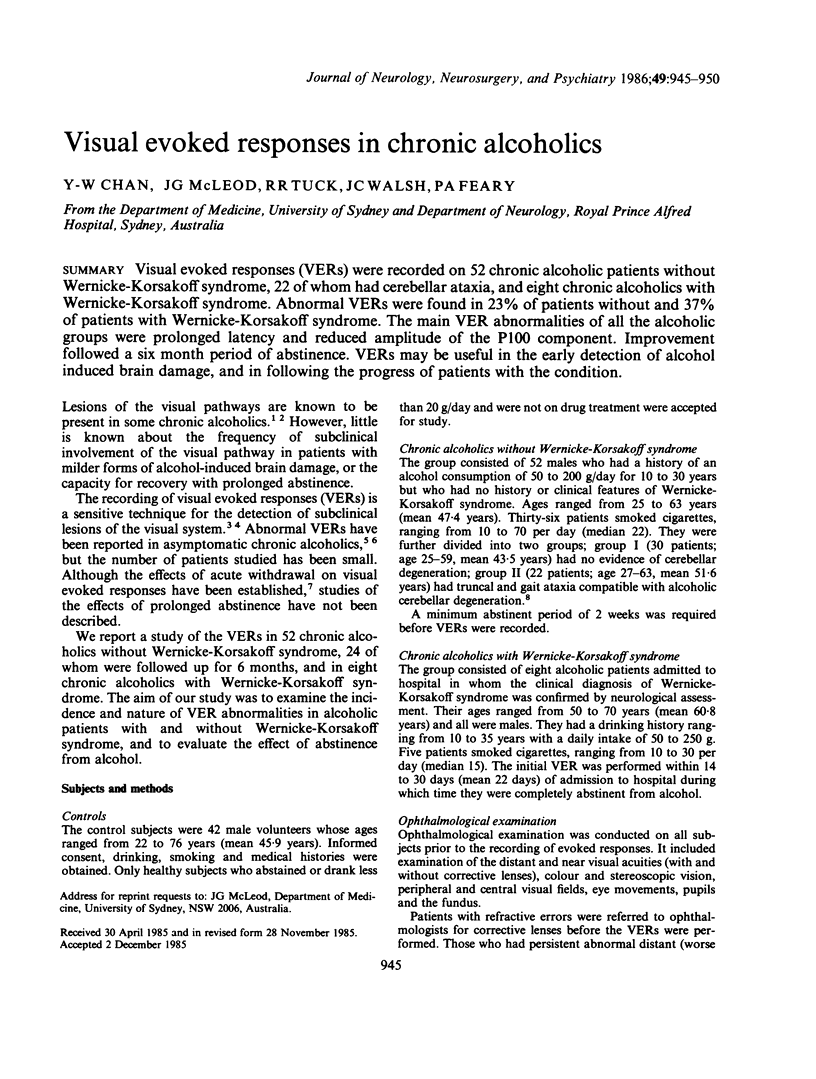
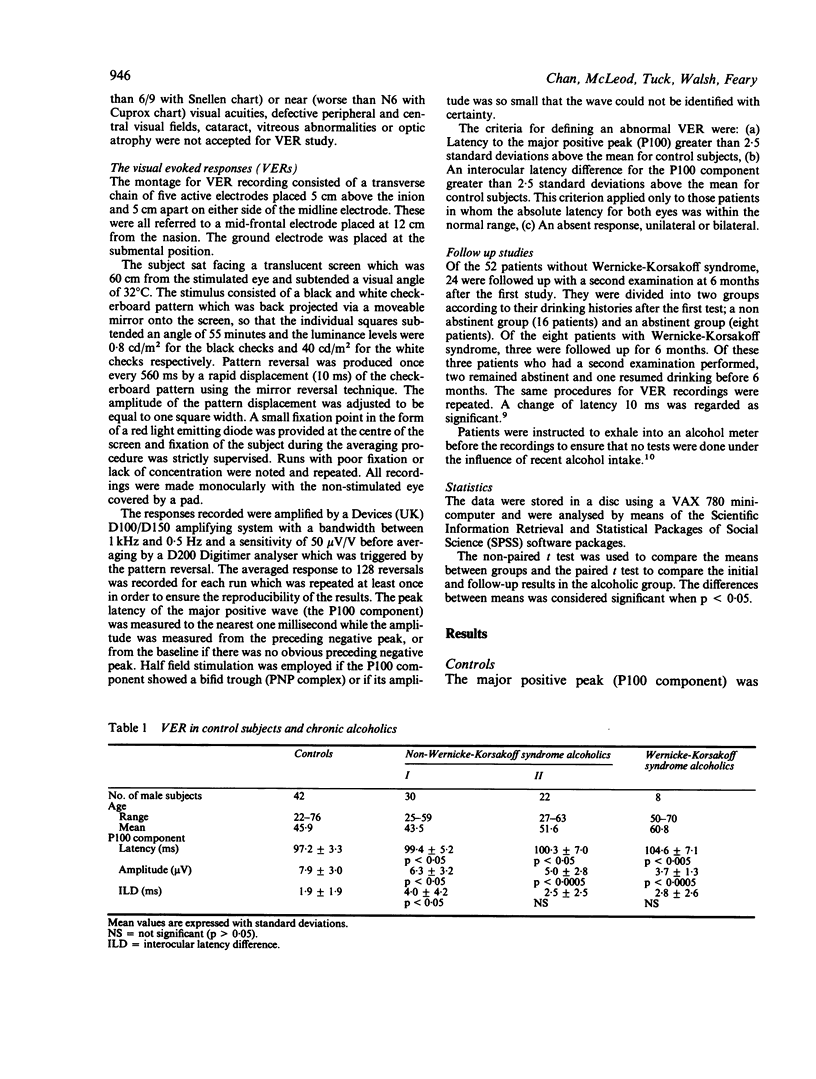
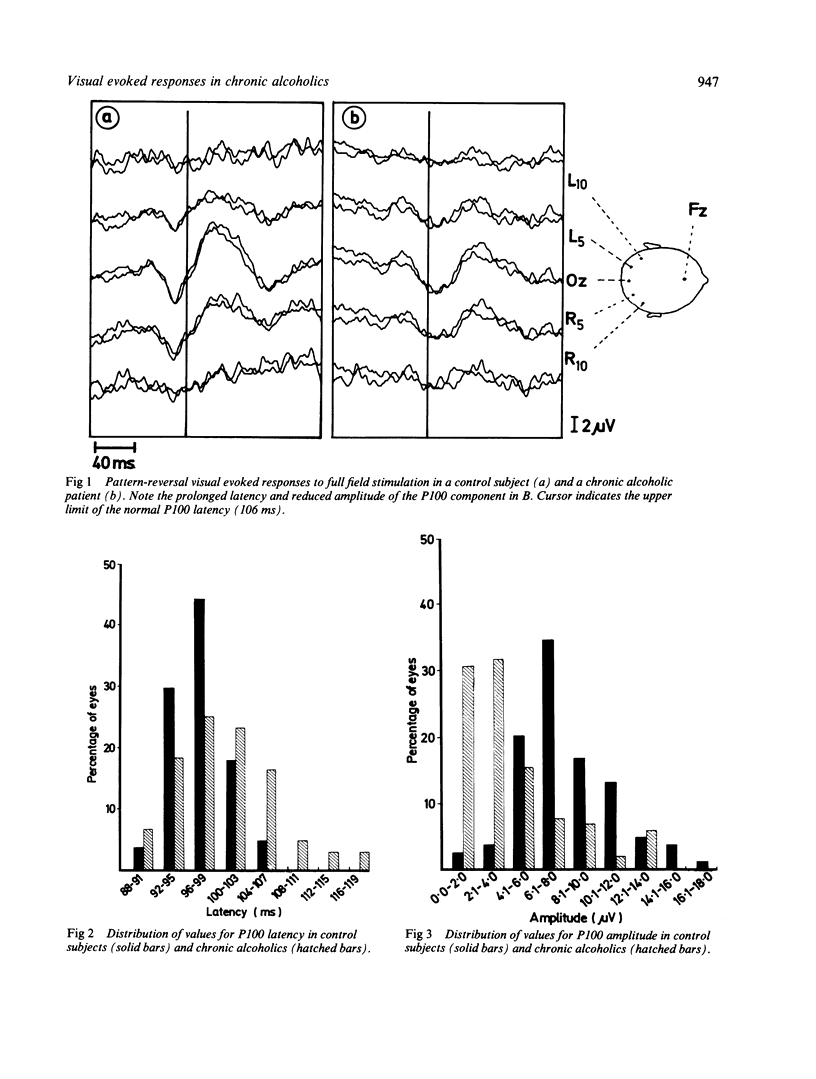
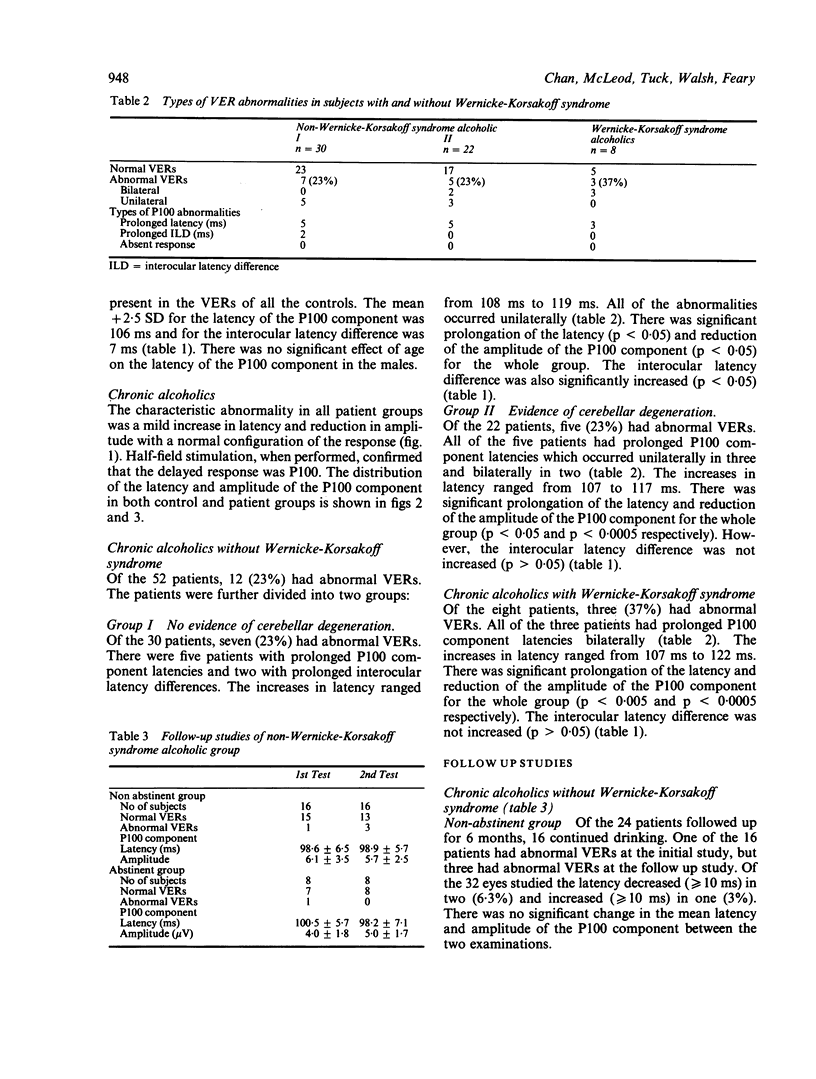
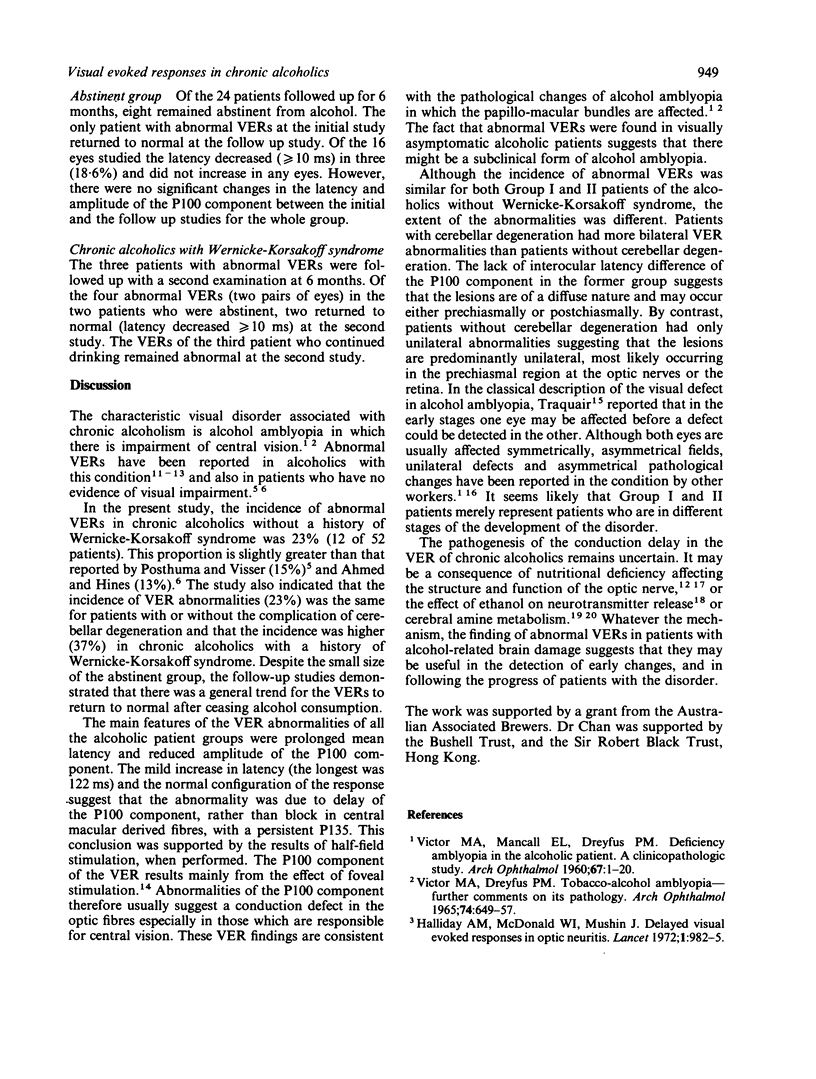
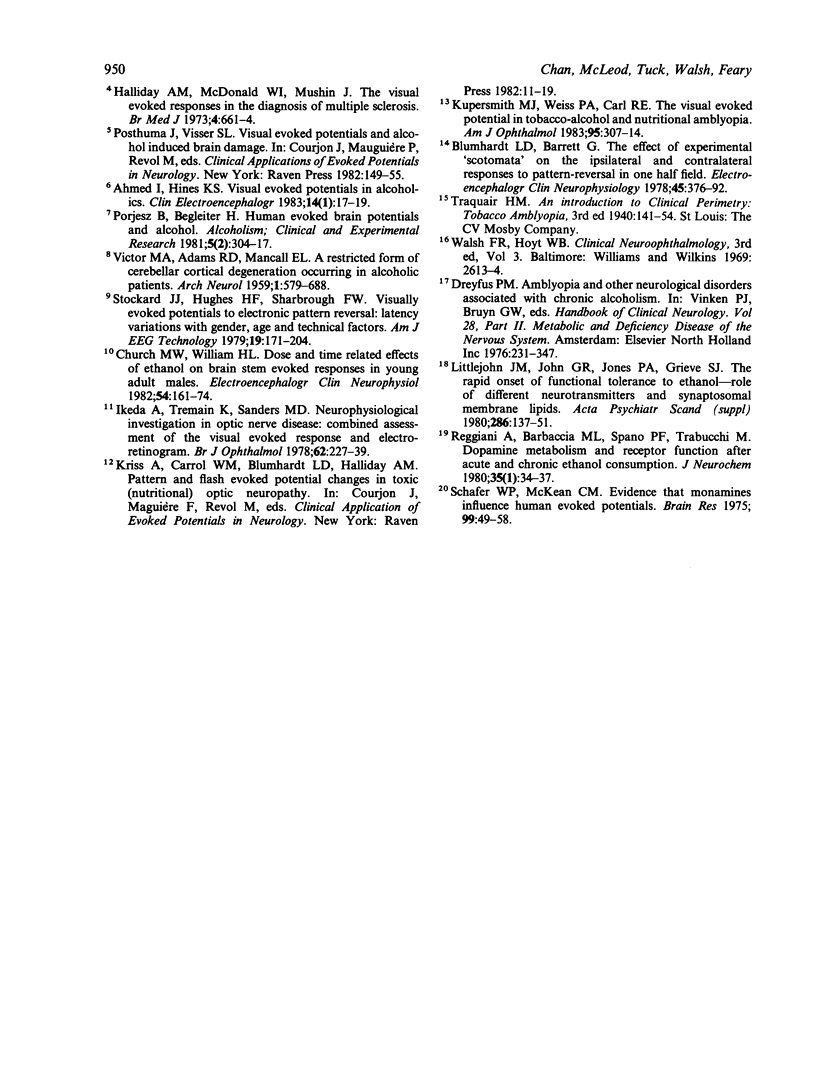
Selected References
These references are in PubMed. This may not be the complete list of references from this article.
- Ahmed I., Hines K. S. Visual evoked potentials in alcoholics. Clin Electroencephalogr. 1983 Jan;14(1):17–19. doi: 10.1177/155005948301400103. [DOI] [PubMed] [Google Scholar]
- Blumhardt L. D., Barrett G., Halliday A. M., Kriss A. The effect of experimental 'scotomata' on the ipsilateral and contralateral responses to pattern-reversal in one half-field. Electroencephalogr Clin Neurophysiol. 1978 Sep;45(3):376–392. doi: 10.1016/0013-4694(78)90189-x. [DOI] [PubMed] [Google Scholar]
- Church M. W., Williams H. L. Dose- and time-dependent effects of ethanol on brain stem auditory evoked responses in young adult males. Electroencephalogr Clin Neurophysiol. 1982 Aug;54(2):161–174. doi: 10.1016/0013-4694(82)90158-4. [DOI] [PubMed] [Google Scholar]
- Halliday A. M., McDonald W. I., Mushin J. Delayed visual evoked response in optic neuritis. Lancet. 1972 May 6;1(7758):982–985. doi: 10.1016/s0140-6736(72)91155-5. [DOI] [PubMed] [Google Scholar]
- Halliday A. M., McDonald W. I., Mushin J. Visual evoked response in diagnosis of multiple sclerosis. Br Med J. 1973 Dec 15;4(5893):661–664. doi: 10.1136/bmj.4.5893.661. [DOI] [PMC free article] [PubMed] [Google Scholar]
- Ikeda H., Tremain K. E., Sanders M. D. Neurophysiological investigation in optic nerve disease: combined assessment of the visual evoked response and electroretinogram. Br J Ophthalmol. 1978 Apr;62(4):227–239. doi: 10.1136/bjo.62.4.227. [DOI] [PMC free article] [PubMed] [Google Scholar]
- Kupersmith M. J., Weiss P. A., Carr R. E. The visual-evoked potential in tobacco-alcohol and nutritional amblyopia. Am J Ophthalmol. 1983 Mar;95(3):307–314. doi: 10.1016/s0002-9394(14)78298-4. [DOI] [PubMed] [Google Scholar]
- Littleton J. M., John G. R., Jones P. A., Grieve S. J. The rapid onset of functional tolerance to ethanol--role of different neurotransmitters and synaptosomal membrane lipids. Acta Psychiatr Scand Suppl. 1980;286:137–151. doi: 10.1111/j.1600-0447.1980.tb08061.x. [DOI] [PubMed] [Google Scholar]
- Posthuma J., Visser S. L. Visual evoked potentials and alcohol-induced brain damage. Adv Neurol. 1982;32:149–155. [PubMed] [Google Scholar]
- Reggiani A., Barbaccia M. L., Spano P. F., Trabucchi M. Dopamine metabolism and receptor function after acute and chronic ethanol. J Neurochem. 1980 Jul;35(1):34–37. doi: 10.1111/j.1471-4159.1980.tb12486.x. [DOI] [PubMed] [Google Scholar]
- Schafer E. W., McKean C. M. Evidence that monoamines influence human evoked potentials. Brain Res. 1975 Nov 28;99(1):49–58. doi: 10.1016/0006-8993(75)90607-1. [DOI] [PubMed] [Google Scholar]
- VICTOR M., MANCALL E. L., DREYFUS P. M. Deficiency amblyopia in the alcoholic patient. A clinicopathologic study. Arch Ophthalmol. 1960 Jul;64:1–33. doi: 10.1001/archopht.1960.01840010003001. [DOI] [PubMed] [Google Scholar]
- Victor M., Dreyfus P. M. Tobacco-alcohol amblyopia. Further comments on its pathology. Arch Ophthalmol. 1965 Nov;74(5):649–657. doi: 10.1001/archopht.1965.00970040651011. [DOI] [PubMed] [Google Scholar]


